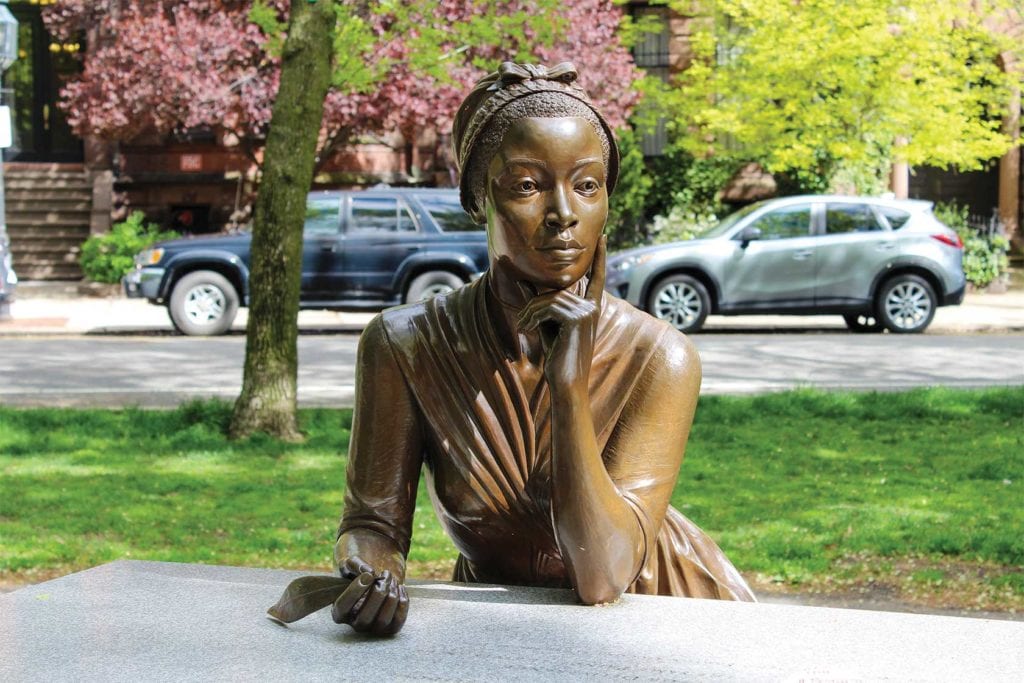Drawing strength from Boston’s African American statues
A tour through Boston's African American statues

One of the many perks of living in a city with such a rich history, besides bragging rights, is drawing perspective and understanding from the past. In its almost 400-year history, Boston has seen, and survived, a lot. A tour through some of Boston’s statues reminds us that if we’ve come this far, we can get through this crisis too.
Spirit of Emancipation | Harriet Tubman Park, South End | by Meta Vaux Warrick Fuller
In this bronze piece at West Newton Street and Columbus Avenue, steps from a sculpture of Harriet Tubman, a man and two women arise from the Tree of Knowledge. The figures stand tall, resolute and strong, a departure from common depictions of emancipation and slavery at the time. This is in large part thanks to the African American sculptor. Fuller was a prominent figure of the Harlem Renaissance movement and she created this sculpture in celebration of the 50th anniversary of the Emancipation Proclamation. Though the original plaster cast was made in 1913, Boston’s bronze version wasn’t installed until 1999.
Phillis Wheatley | Commonwealth Avenue Mall | by Meredith Bergmann
Phillis Wheatley was brought to Boston on a slave ship in 1761 and put to work as a personal servant to the Wheatley family on what is now State Street in the financial district. At the time, she was 8 years old. Wheatley was a talented writer and published her first poem at age 12. Though her life was plagued with trials, slavery first and later poverty and three children who died in infancy, she never stopped putting her thoughts on paper. She became the first African American and first U.S. slave to publish a book of poems, as well as the third American woman to do so.
Robert Gould Shaw and Massachusetts 54th Regiment Memorial | Boston Common | by Augustus Saint-Gaudens

Robert Gould Shaw and the Massachusetts
54th Regiment Memorial PHOTO: COURTESY FRIENDS OF THE PUBLIC GARDEN
One of the best-known statues of black history in Boston, the Robert Gould Shaw Memorial pays homage to one of the first African American regiments in the Civil War. The high-relief bronze monument took almost 14 years to complete. It’s particularly significant for the way Saint-Gaudens sculpted the faces. Often in group portraits, especially of African Americans, individuality was erased in favor of a nondescript mass. Saint-Gaudens used real people to model the soldiers and gave each face its own unique, individual look. The men are distinguishable as individuals to be honored separately as well as together in the regiment.
Though the memorial was under restoration prior to the pandemic and may not be viewable on a socially-distanced walk right now, the piece is featured in a WGBH Forum Network panel discussion about the significance of race and public monuments, available on YouTube.







